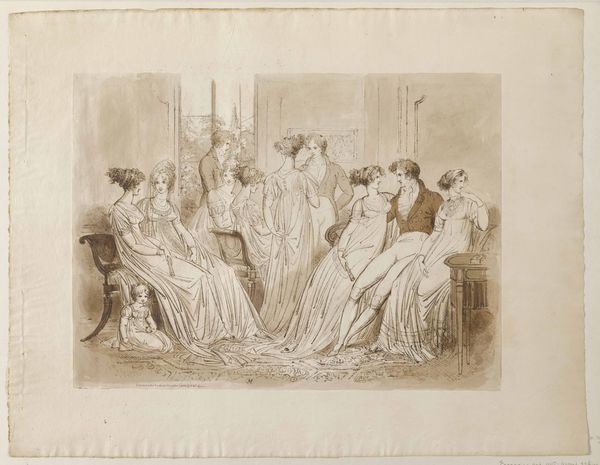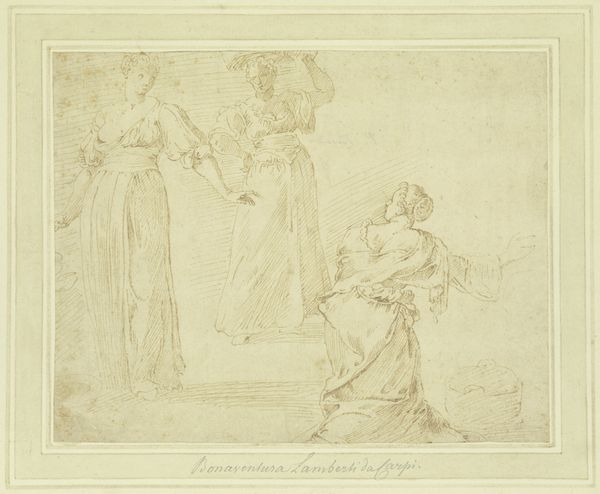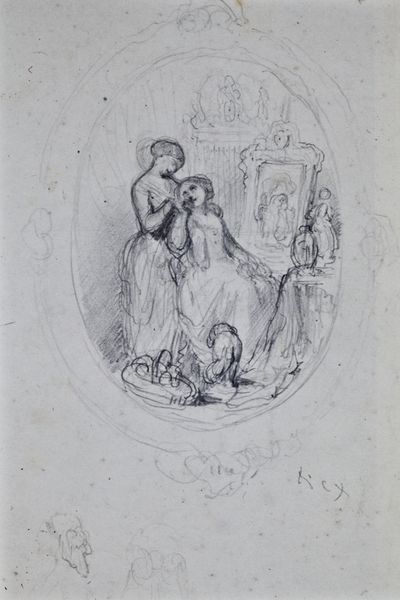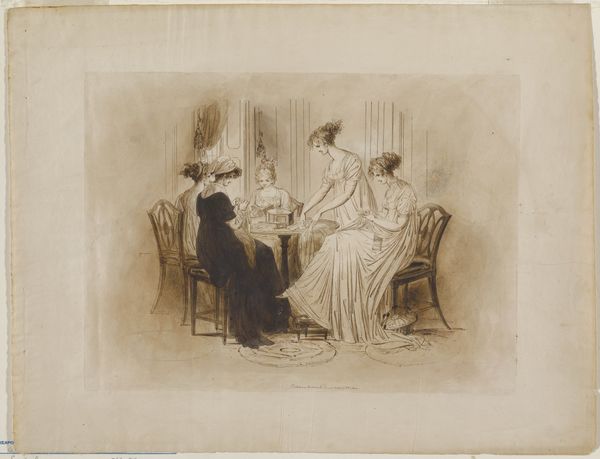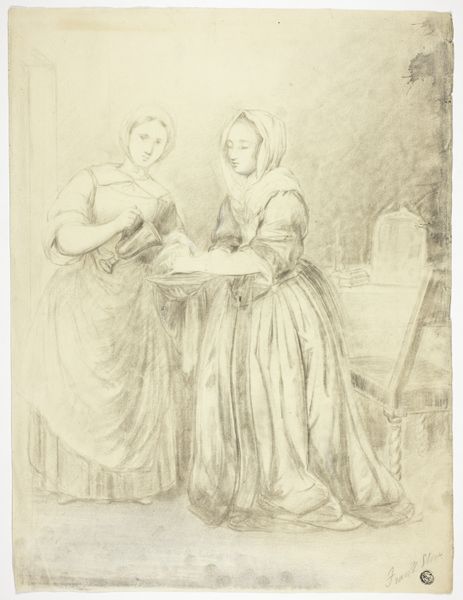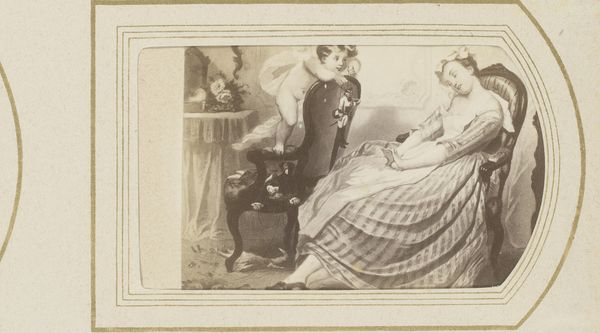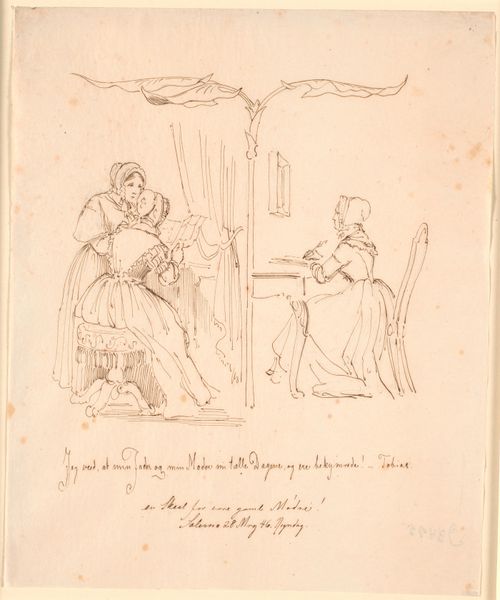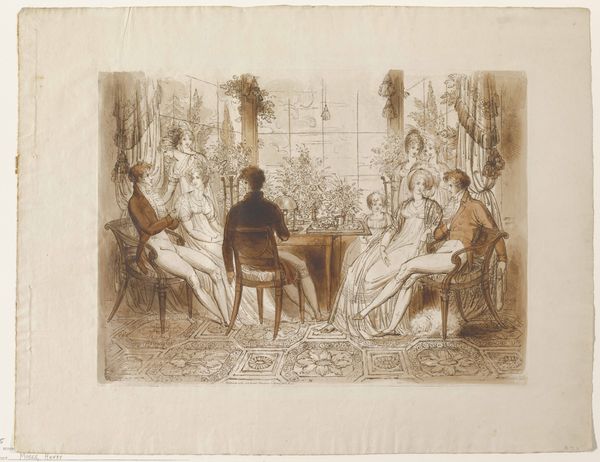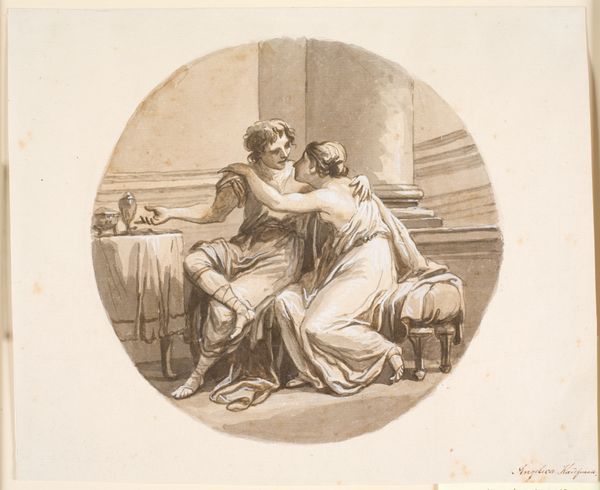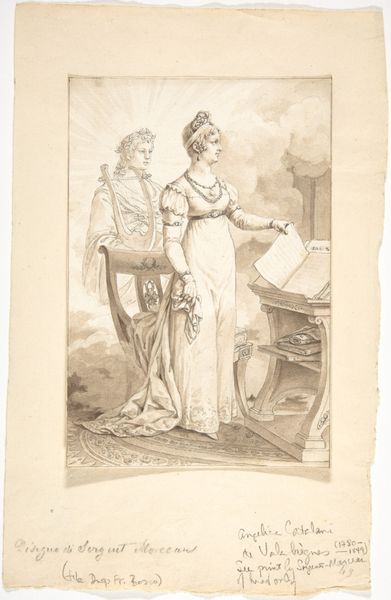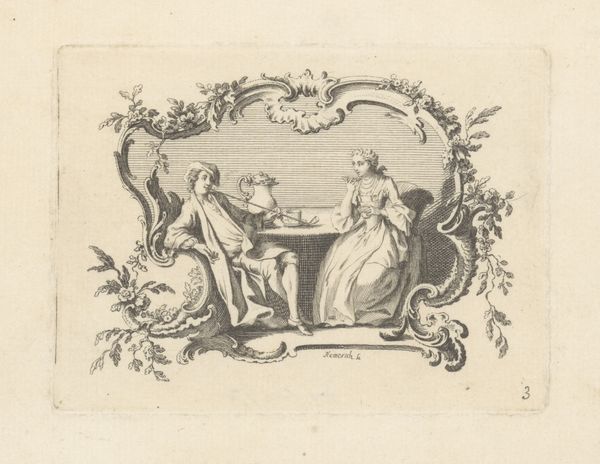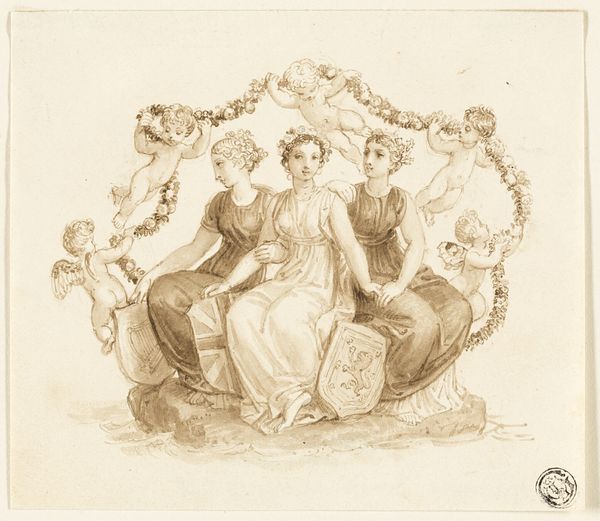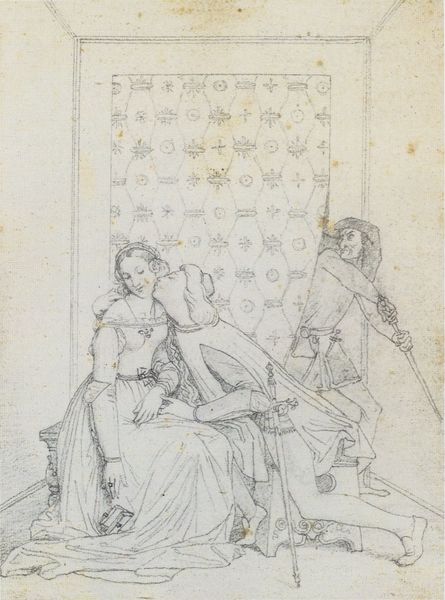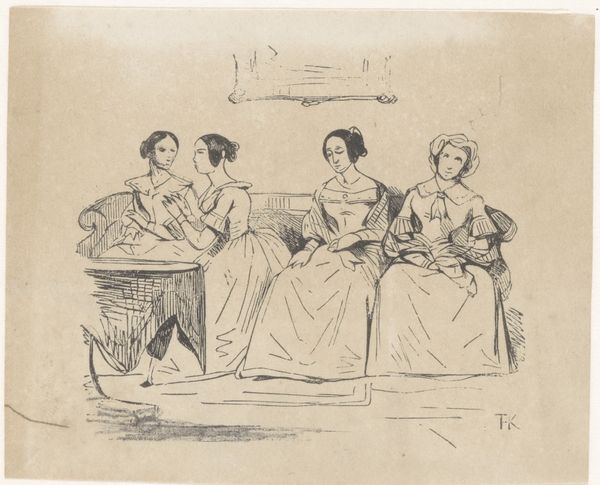
drawing, print, paper, ink, pencil
#
drawing
#
neoclacissism
#
narrative-art
# print
#
charcoal drawing
#
figuration
#
paper
#
ink
#
pencil
#
line
#
genre-painting
#
academic-art
#
watercolor
Dimensions: 10 3/4 x 14 1/2 in. (27.31 x 36.83 cm) (plate)
Copyright: Public Domain
Curator: Today we're looking at "Plate of Style", an intriguing work created around 1804. It is currently held in the collection of the Minneapolis Institute of Art, executed with ink, pencil, and watercolor on paper. Editor: It strikes me as an intimate tableau, almost frozen in time. The lines are so delicate, giving it an air of quiet dignity and maybe even slight melancholy. The arrangement feels formal, but something in the figures' posture hints at a deeper connection. Curator: Indeed. Looking at this piece through the lens of production, it's fascinating to consider the role that drawings and prints played during this Neoclassical period. These weren’t just preparatory sketches, but were often made for reproduction and wider distribution as accessible versions of art. So "style" isn't merely depicted, it’s reproduced and distributed, implicating wider questions of consumption and taste. Editor: Absolutely. These women are avatars of fashion and status. I see symbols of domesticity – the furniture, the textiles – framing them. The mother holding a child immediately conjures ideals of familial love, which during that time gained more representation. Notice the meticulous attention to the women’s attire; their dresses, shawls and headwear reflect high society’s fascination with antiquity. These symbols carry tremendous weight about cultural aspirations, propriety, and femininity. Curator: And it speaks to labor too. Consider the labor embedded in the very textiles they wear, or even the artisanal process of creating such an elaborate print. These are not mere aesthetics; they reflect entire production chains and complex social relations. Editor: Looking closer, their hairstyles reference Greek and Roman styles – reflecting the period’s fascination with classical antiquity. Those symbolic choices weren’t random. Artists were deliberately trying to link contemporary ideals to what they perceived as a glorious past. And even something simple such as the type of furniture featured speaks volumes about who they were trying to identify as. Curator: And those circles rippling across the rug. It invites reflection about circulation – of styles, goods, ideas…it almost asks about how this print is destined for consumption, replicating the circles already depicted. Editor: Fascinating to consider it in such a way. I leave this listening with a sense of yearning, a bittersweet reminder of ephemeral beauty and cultural ambitions enshrined in simple sketches. Curator: For me, this is an exciting view onto 19th century material and intellectual life: it’s not just an image; it is material with social and historical reverberations, waiting to be heard.
Comments
No comments
Be the first to comment and join the conversation on the ultimate creative platform.
